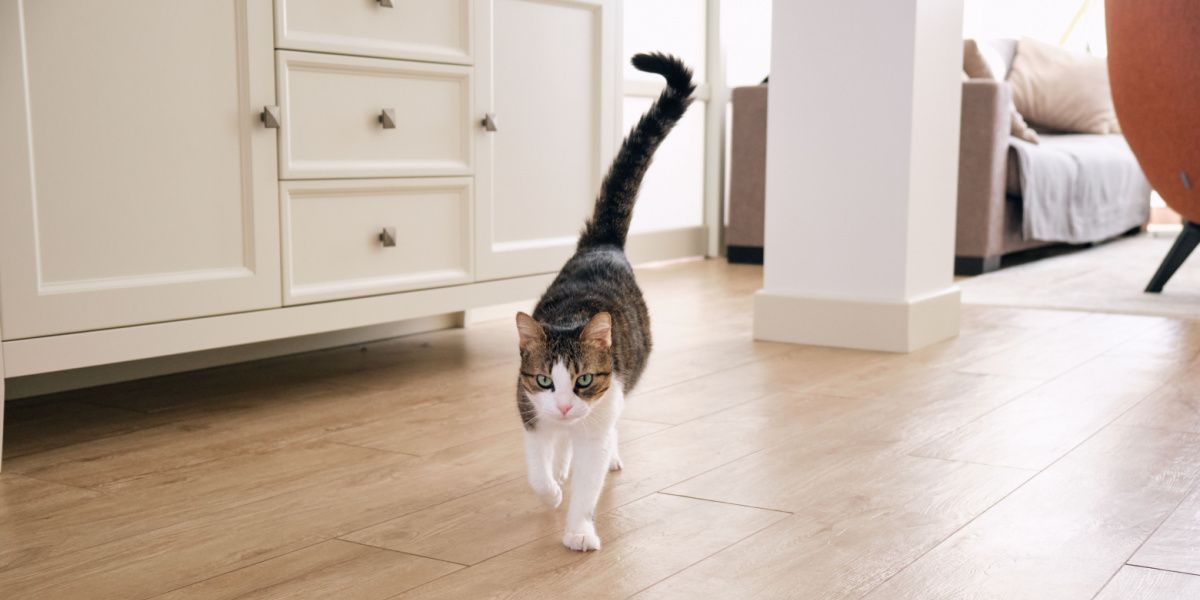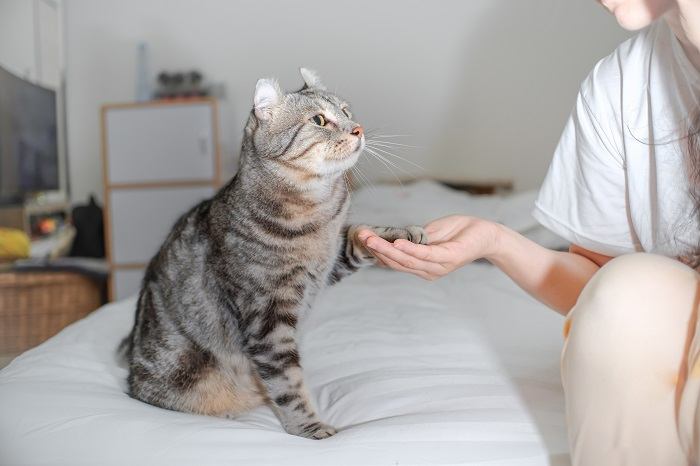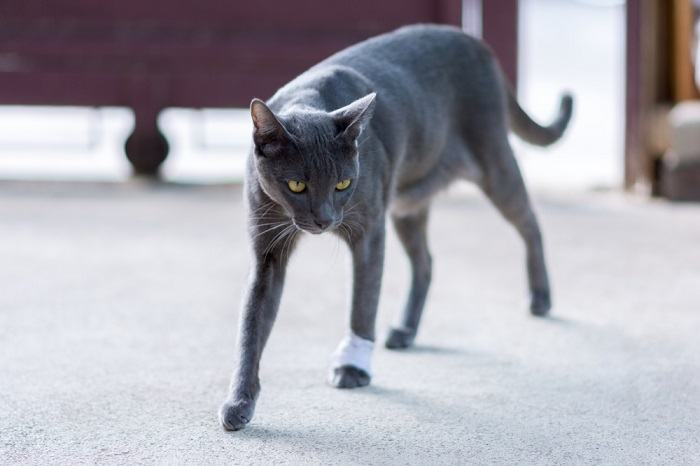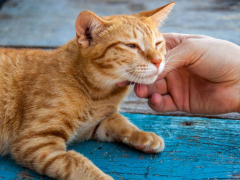
When you notice that your cat is limping, what should you do? Should you panic and immediately rush to the veterinarian or should you give it a few hours to see if it resolves on its own?
Ultimately, the answer to these questions will depend upon a number of factors. Read on to learn more about limping in cats, including potential causes and when you should seek veterinary care.
Causes of Limping in Cats
There are many possible reasons that your pet could be limping. Ultimately, determining the cause of cat limping will usually require a veterinary exam and diagnostic testing.
However, the following common reasons for limping may be to blame:
1. Musculoskeletal Conditions
Perhaps most obviously, your cat could have a musculoskeletal injury affecting their leg. Maybe they sprained it, strained a muscle or ligament, or even have a broken leg. Cats are active, athletic animals, but sometimes their high-energy acrobatics can lead to injuries.
Arthritis can also cause limping in cats. Just like dogs and humans, cats may develop arthritis in their hips and joints as they age. This can lead to a gradual onset of limping, often accompanied by a decrease in activity levels. Arthritis is more common in cats with an underlying joint disorder, such as hip dysplasia or patellar luxation, but it can also occur with no apparent underlying cause.
2. Skin Conditions
Wounds and skin diseases may cause limping, especially when they affect one of your cat’s legs. Outdoor cats often develop abscesses and wound infections, due to scuffles with neighborhood cats and other sources of trauma.
Looking carefully at your cat’s leg or paw may show a visible cause for limping, such as open wounds, bleeding, swelling, or even a thorn caught in your cat’s paw. Paw pad burns, which can occur on a hot surface such as a stove, hot pavement, or hot gravel, can also cause limping in cats.
Skin conditions affecting the feet, such as plasma cell pododermatitis or “pillow foot,” can also cause limping in cats. Ingrown toenails and other claw disorders can also cause lameness.
3. Neurologic Disease
Normal walking requires signals to flow freely between your cat’s brain and the limbs. Any condition affecting your cat’s spinal cord or nerves can cause limping. Cats with a neurologic disease may have other neurologic symptoms, including trouble balancing, difficulty standing, lack, and changes in mentation or behavior.
4. Saddle Thrombus
While relatively uncommon, a saddle thrombus is the most serious cause of lameness in cats. In cats with heart disease, a clot (or thrombus) can form in the aorta and block blood flow to one or both of the hindlimbs. Affected cats will be painful and unable to use the affected leg(s), which may be cold to the touch.
What To Do if Your Cat Suddenly Starts Limping

Examine your cat’s paws when they limp to see if they have damaged paw pads.
While limping is rarely life-threatening, there is one notable exception: a saddle thrombus. If your cat is suddenly non-weight-bearing on one or more limbs and appears to be in pain, this is an emergency. Seek veterinary care immediately, at an emergency veterinary hospital (if necessary), to rule out a saddle thrombus.
What if My Cat Is Limping but Still Jumping and Running?
In most cases, however, even a sudden onset of mild limping does not indicate a true medical emergency. But while your cat may still jump and run, the limp doessuggests discomfort or pain. So yes, you should seek veterinary care as soon as possible so you can make your cat comfortable, but it’s likely okay to wait for the next available appointment with your regular veterinarian.
When Should You Go to the Vet for Limping in Cats?
If your cat is in severe pain or has been limping for more than a couple of days, it’s time to schedule a veterinary appointment. This is also the case if your cat’s limping is accompanied by a lack of appetite, a limb that is being held in an odd position, or an otherwise worsening condition.
A veterinary visit is essential in order to receive a proper diagnosis. Obtaining an accurate diagnosis of your pet is crucial to get your beloved kitty the help they need.
Load your cat into its carrier gently for this visit, to avoid further exacerbating any injuries. Place a blanket in the carrier, to provide padding for your cat’s movements.
Your veterinarian will begin by performing a thorough physical exam. They will carefully inspect your cat’s hindlimbs, looking for any wounds or painful areas while assessing your cat’s range of motion. Your veterinarian will also check carefully between your cat’s paw pads to make sure there are no wounds or splinters present and will also check your cat’s nails.
Based on exam findings, your veterinarian will recommend appropriate diagnostic tests. X-rays may be used to rule out a bone fracture or osteoarthritis. Blood tests may be recommended, to ensure that your cat does not have any underlying medical conditions before prescribing pain medications. If your veterinarian suspects a skin condition is the cause of your cat’s limping, various dermatology diagnostics may be recommended.
Treatment of Limping in Cats

Skin conditions and claw disorders can cause limping in cats.
Treatment largely depends on the underlying cause of the limping.
Bone fractures often require surgical repair, while most muscular injuries and arthritis can be treated with pain medication. Veterinarians have a wide variety of pain medications available for managing pain in cats.
They often prescribe non-steroidal anti-inflammatory medications (NSAIDs), such as meloxicam and Onsior®, to treat the pain and inflammation associated with injuries and arthritis. Your veterinarian may also recommend buprenorphine if your cat is in severe pain.
A puncture wound or abscess is typically treated with antibiotics. Additionally, your veterinarian may sedate your cat to allow thorough cleaning and drainage of any wounds. More significant skin conditions may require a combination of oral and topical treatments.
If your cat is diagnosed with neurologic disease or a saddle thrombus, your veterinarian will talk to you about treatment options. These cats often require aggressive treatment, with a variable prognosis.
Once your cat has returned home from their veterinary visit, keep them comfortable. Restrict your cat to low surfaces. This can reduce their chances of further aggravating their injury by jumping off an elevated countertop or shelf. Provide a kitty bed or another comfy place for your cat to rest, perhaps creating a nest out of your cat’s favorite blankets.
Give your cat all medications as recommended by your veterinarian, and return to the veterinarian for any recheck appointments as directed.
Also Read: 11 Signs That You Need to Get Your Cat To the Emergency Room







